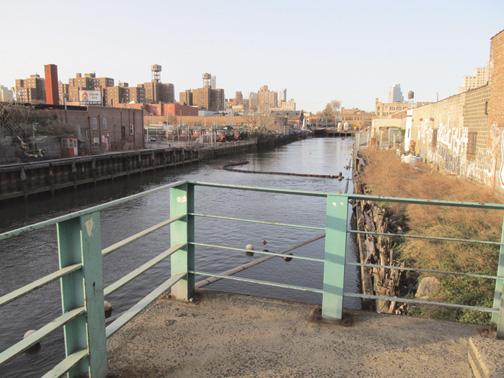Everyone around these parts knows that the Gowanus Canal is a highly polluted waterway due to a legacy of industrial uses along its banks. Those toxin-generating uses are now gone. This has given us an opportunity to remediate the area and we have seized upon that opportunity.

Progress has begun as “flushing tunnel,” which has the ability to draw water in from or out to Buttermilk Channel, has been upgraded. Next there is an increase in the capacity of flow to the sewer treatment plant, followed by the addition of green elements along the canal, and now with the imminent Comprehensive Environmental Response, Compensation, and Liability Act (CERCLA) cleanup added to the previously planned brown-field remediation of the manufactured gas plant (mpg) sites and other sites that still leak toxins. The process of designing the remedy is underway. The design is to be in conformance with Record of Decision (ROD). The ROD told us in broad terms the things that needed to be done to clean the canal. All of this is well under way and the EPA remains on schedule for this stage. When design is concluded the actual remediation will begin. At the inception of the process it was thought that CERCLA authority did not extend to the reduction of Combined Sewer Overflows (CSO). We do not have separate sanitary sewers and sewers. In a heavy rain situation, the rainwater and the sewage mixes and this temporary excess is directed into the Canal. Low levels of dissolved oxygen and high bacteria levels in the canal are the main everyday health and quality of life issues for the community and they were previously addressed through the City and State Long Term Control Plan. This process is continuous and periodically updated and will remain relevant to the canal cleanup. The CERCLA projects estimated cost will be at least $500 million and that is without factoring in the costs of new bulkheads, barriers and retention tanks and/or other mechanisms for CSO reduction. In return the canal will be dredged from bank to bank. Even then the dredging will not go deep enough to remove all the toxic soil. These costs are borne by the polluters but in this instance the costs will be in large part paid for with water ratepayer money because the City is one of the responsible parties. Fortunately, we do not rely on ground water for drinking and washing. Since toxins will remain in the soil under the canal there will be a capping system. The dredging will be deep enough to allow for navigation, although there are no commercial users left past 9th Street. A National Grid proposal to do tapered banks requiring less dredging (and arguably leading counter-intuitively to reduced flooding), which would have left us with a recreational waterway was rightly rejected by the EPA, as inadequate, since it left far more toxic materially in the canal bed. I became a supporter of the CERCLA process as my confidence in the project engineer grew, as the leadership team met their stated time frames and particularly when the ROD included substantial reductions in CSO’s through the building of retention tanks near the canal. The EPA found that there would be significant toxic recontamination of the canal from run-off into the sewers, thus the CSO issue was placed within the CERCLA authority. This was novel and of great significance as now there would be additional funds available for CSO abatement outside of the Long Term Control Plan. There are remaining issues about where the retention tanks should be located and even if there are other means to attain the end of CSO reduction that would not include such tanks. There remains discussion between the various authorities as to whether we may have to temporarily lose the Thomas Greene Park and DD pool, whether or not retention tanks are sited there, in order to adequately remediate one of the MPG sites. Hopefully, if there is the loss of these important amenities, there will be creation of a temporary replacement facility nearby. We should know more soon as the remedial design takes shape and as the other suspect upland sites are fully investigated. The process of selecting the sites for retention tanks will be the subject of an informational meeting on Wednesday September 17, 2014. DEP Commissioner Emily Lloyd will make a presentation detailing how the number of potential site have been narrowed down to a few prime sites. She will then be seeking community input into the final selection of sites. I will have the honor, as chairperson of Brooklyn Community Board 6’s Environmental Protection Committee, of introducing our Commissioner. We have our own vision zero around the Gowanus and that is to have zero sewage over-flow into the canal. As if our CSO vision and the possible temporary loss of a park and pool are not contentious enough, we may yet get to the issue that colors each local discussion about the canal – what will be the nature of future development radiating from the banks of the revitalized canal?
google-site-verification=s3z8NzxZtdrtBZcwQfOaOY7Ux4D5MT3U6EXCv8hM58I
file:///C:/Users/StarRevue/Downloads/google980f0f1d43725f46.html








